An afternoon walking around Singapore yielded a lot of recursive cubism – order, almost-order and chaos made to look like order. Society here is known for its regulation and discipline, and it’s almost as though that same discipline is imposed on its architectural forms. Of course this is a deliberately curated (and thus biased) set, and granted, most are older buildings; the newer ones seem to still be full of straight lines, but with a conspicuous allergy to right angles. Surely we must be close to the point technologically where non-rectilinear forms of architecture are economically viable (I suppose Gardens by the Bay and the Henderson Waves are good examples of this, and located in Singapore too). Sometimes I also wonder if it’s a sort of physical manifestation of digital influence…of course, it’s more likely that economics is the underlying driver, but there’s no cost to philosophising. MT
The Scrapbook series is shot on an Olympus PEN F, with unedited JPEGs straight from camera bar resizing (and of course some choice settings).
__________________
Visit the Teaching Store to up your photographic game – including workshop videos, and the individual Email School of Photography. You can also support the site by purchasing from B&H and Amazon – thanks!
We are also on Facebook and there is a curated reader Flickr pool.
Images and content copyright Ming Thein | mingthein.com 2012 onwards unless otherwise stated. All rights reserved



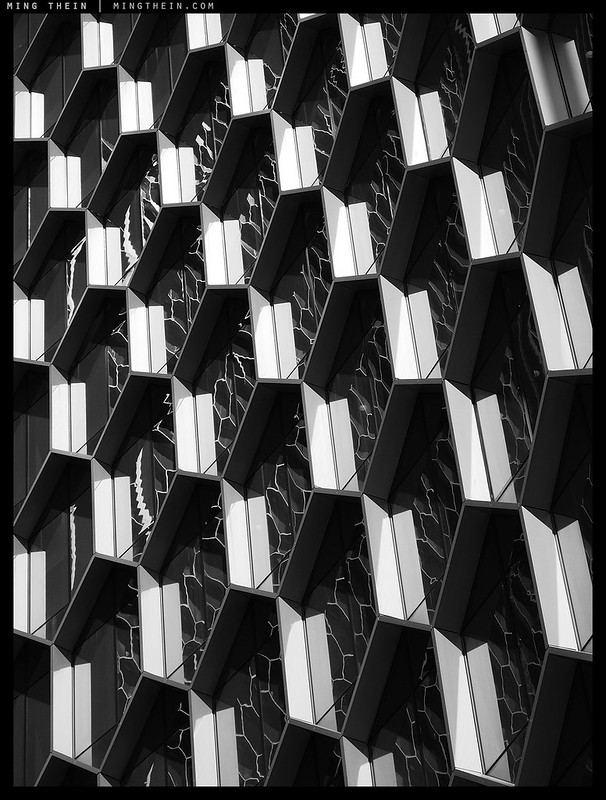

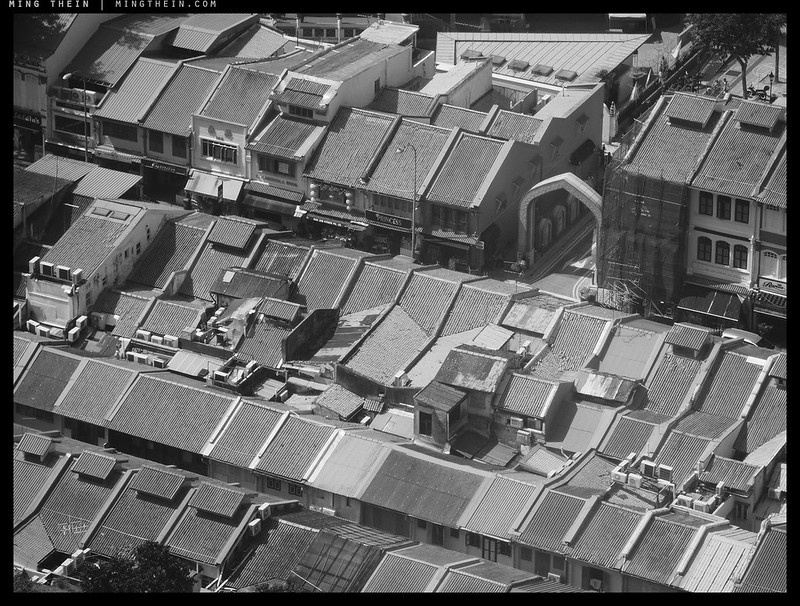
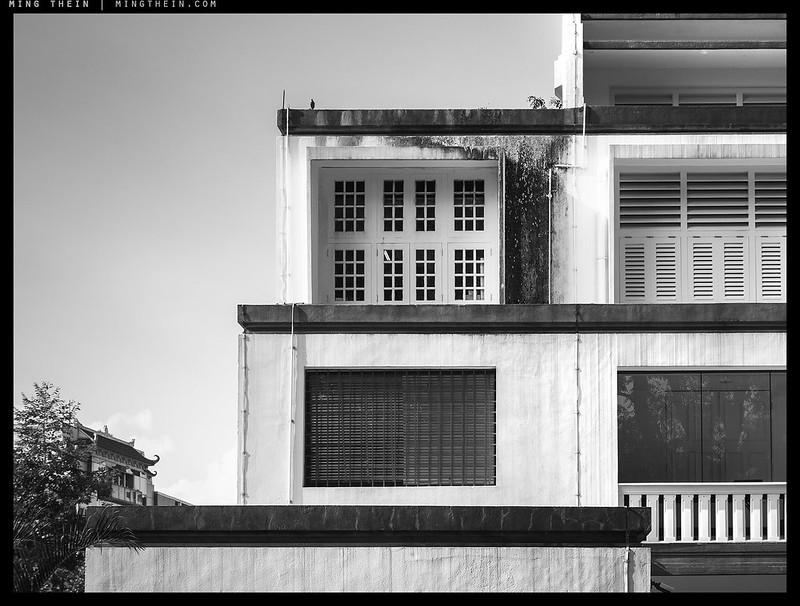
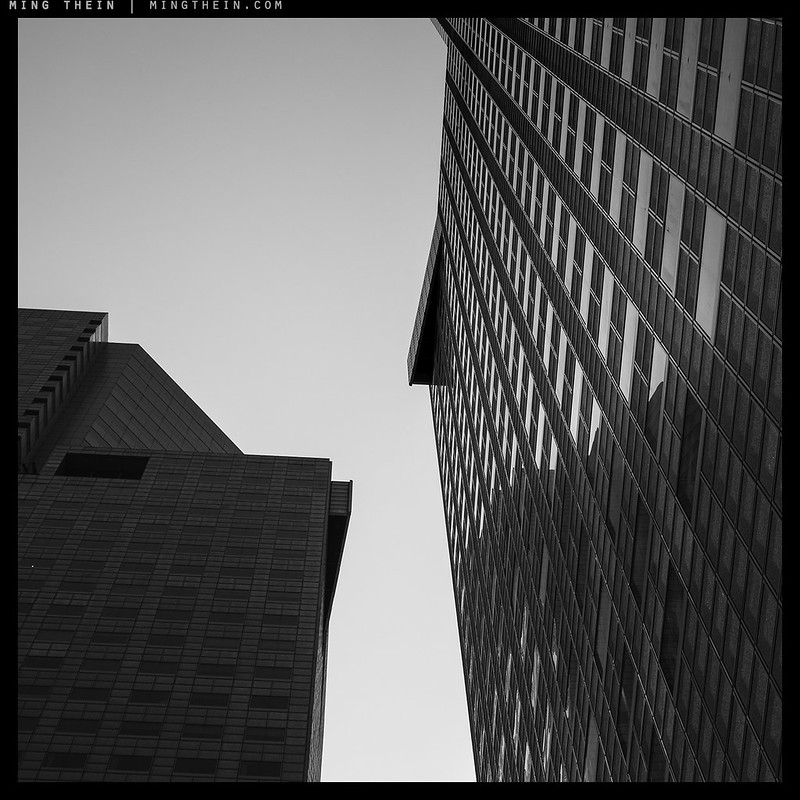


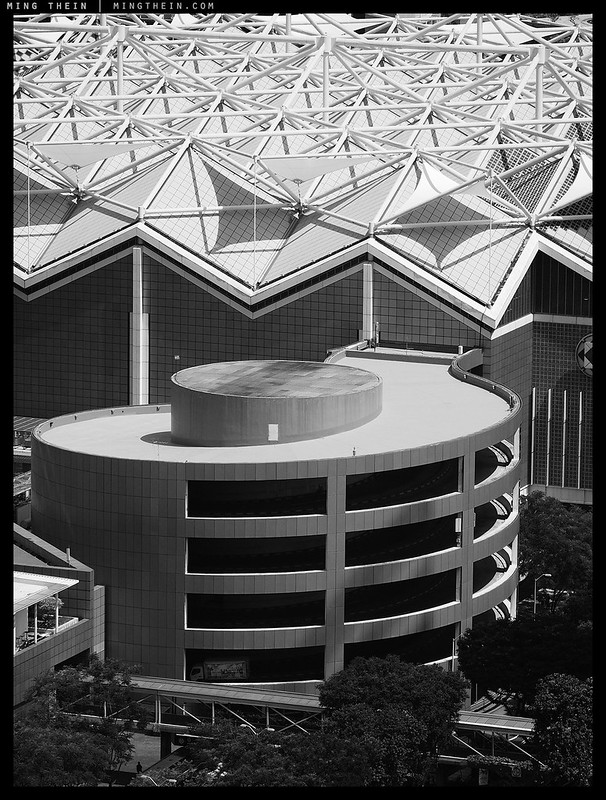
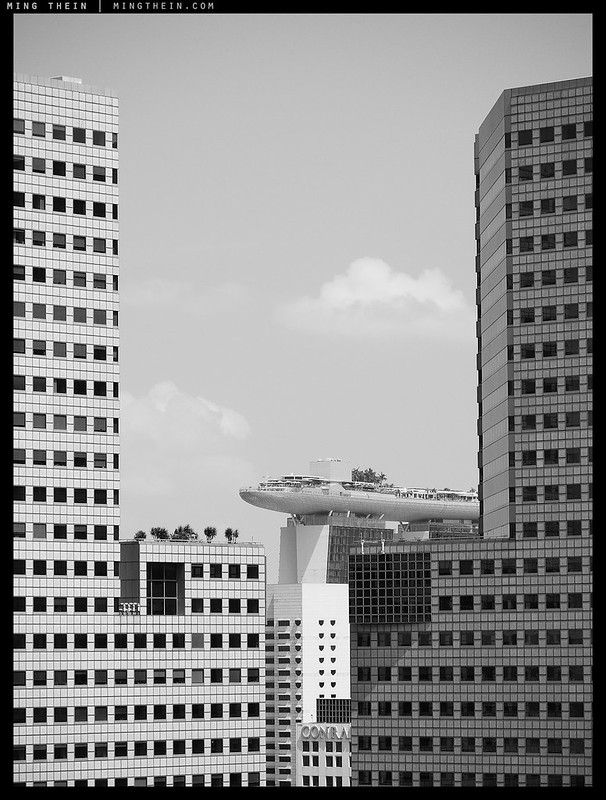

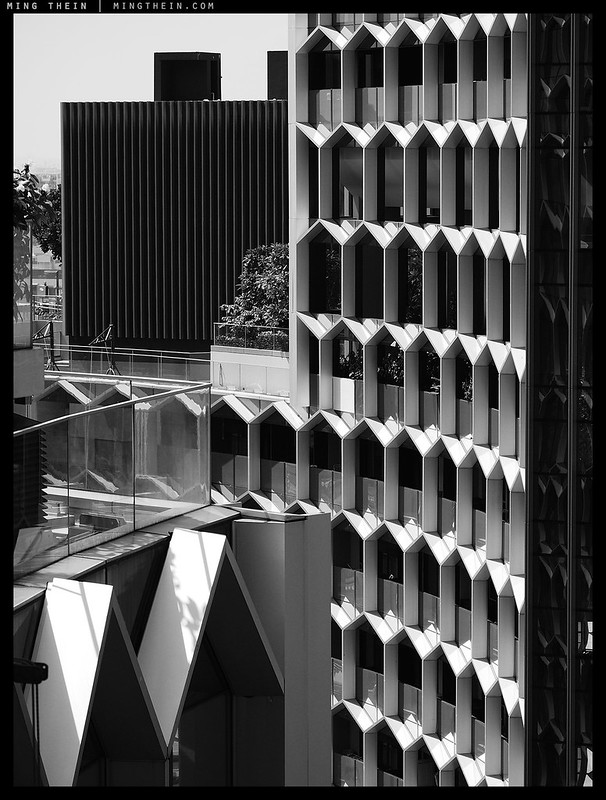
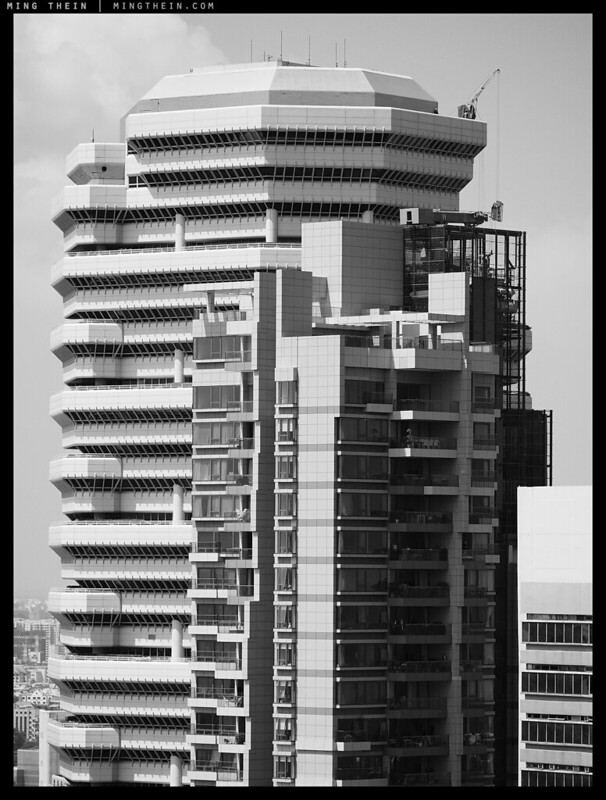
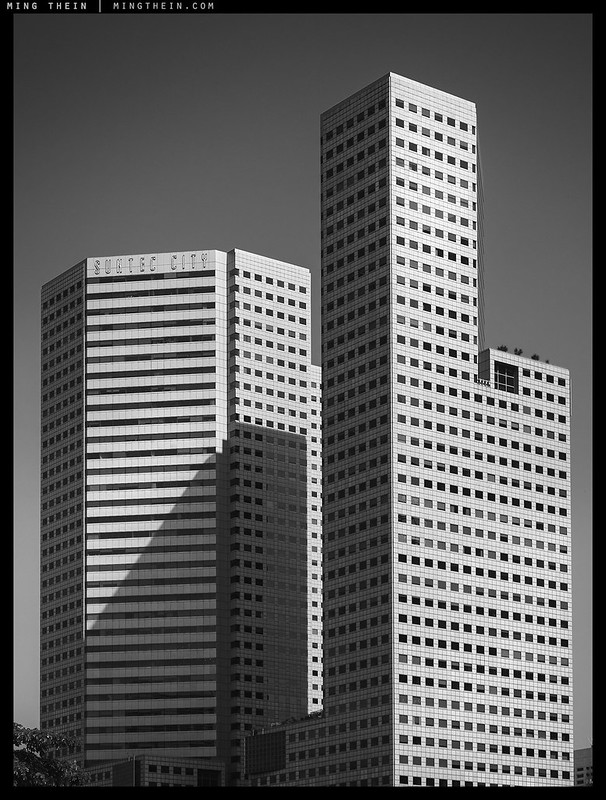





It does!
These building pictures, when there are no trees or people in the frame, feel silent and beyond reach. A bit alien and immutable. I like observing them, especially in Black and White. There is no need for black skies and long exposures. The Pen does a great job supporting your vision!
Thanks – I think that means the mood got conveyed perfectly 🙂
Great shots, as always – I feel much better looking at yours, Ming – I have a similar preference for straightening all the verticals, with the usual consequential changes to the other lines – but like you, every now and then I leave the converging angles, because they make the picture.
Over the years I’ve spent a lot of time in Singapore – in fact, en route to France to be married (in Paris!), we purchased our wedding rings in a Tiffany shop in Ngee Ann City, Orchard Road. Great place – friendly people – from my personal experiences, the safest place on Earth, for tourists (with or without loads of cameras).
Haha – I find that generally one of three scenarios works:
1. If there is enough visual weight at the bottom (usually a luminosity gradient) and/or the subject isn’t too tall and thin, then straightening everything perfectly works;
2. If there isn’t enough visual weight or the subject is tall and thin, then leave some convergence in or a lot of space around the outside, else our brains think the top is too wide;
3. If crazily convergent angles make the composition and/or provide structure or leading lines to the main subject, obviously do not straighten…
I’m sure there are exceptions, but I think the vast majority of situations fall into these buckets…
For those as confused as I was regarding #12: https://en.wikipedia.org/wiki/Marina_Bay_Sands
Number 3!
This time I found it easier to pick favourites…
#3 , That varying pattern!
( Somehow this reminds me of, that these magnificent (hm) buildings decay with time.)
#9 , That combination of pattern and geometry!
#13 , That cloud looking down at our (somewhat sterile) human efforts…great!
🙂
The lines looked like they were leaning a bit at the top you said straight out of the camera. I like the image and understand the thoughts behind it. This brings up a bigger discussion about lines and angles that could could find a decade of work to write about with your pictures.
Personally I was fascinated by this work and how it applies to so many things we do and live with. Call me crazy but it also supports the thoughts that we’re either not alone or at one time log ago man had help.
The link to his utube discussion should be found in his website if not search utube with Giza and you’ll find it.
Due to the length of the video it took me two days to watch it but at the end it was worth every minute.
https://grahamhancock.com/nightingalee1/
Interesting – thanks for the link!
Hi Ming
Wanted to thank you for your scrapbook series – lovely. It has really reinvigorated my interest, and I am enjoying my photography again.
By the way – will you be putting out any teaching modules with your Pen f settings and your SOCC work flow.?
Thanks
Mike
Thanks! The Pen F settings are in a comment on this post if you scroll down a bit: https://www.google.com.my/amp/s/blog.mingthein.com/2018/06/18/heresy-and-sacrilege-mt-and-sooc-experiments/amp/
Thank you
Oh, and the shots look very crisp and just the right amount of contrast. Splendid really. 🙂
Thanks!
Hi Ming, What are you using for lenses on that Pen F? I was watching a few reviews (tried to find one on your page…couldn’t find it), on that camera and many people were stating that the menu system is such a royal pain in the butt…a nightmare. Has Olympus updated firmware to help out with that?
12-60 Panasonic mainly. Menus are still a pain, but at least once you configure it once you don’t have to do it again…
Panasonic Lumix or Panasonic Leica?
Panasonic Leica – sorry, I thought there was only one 12-60…